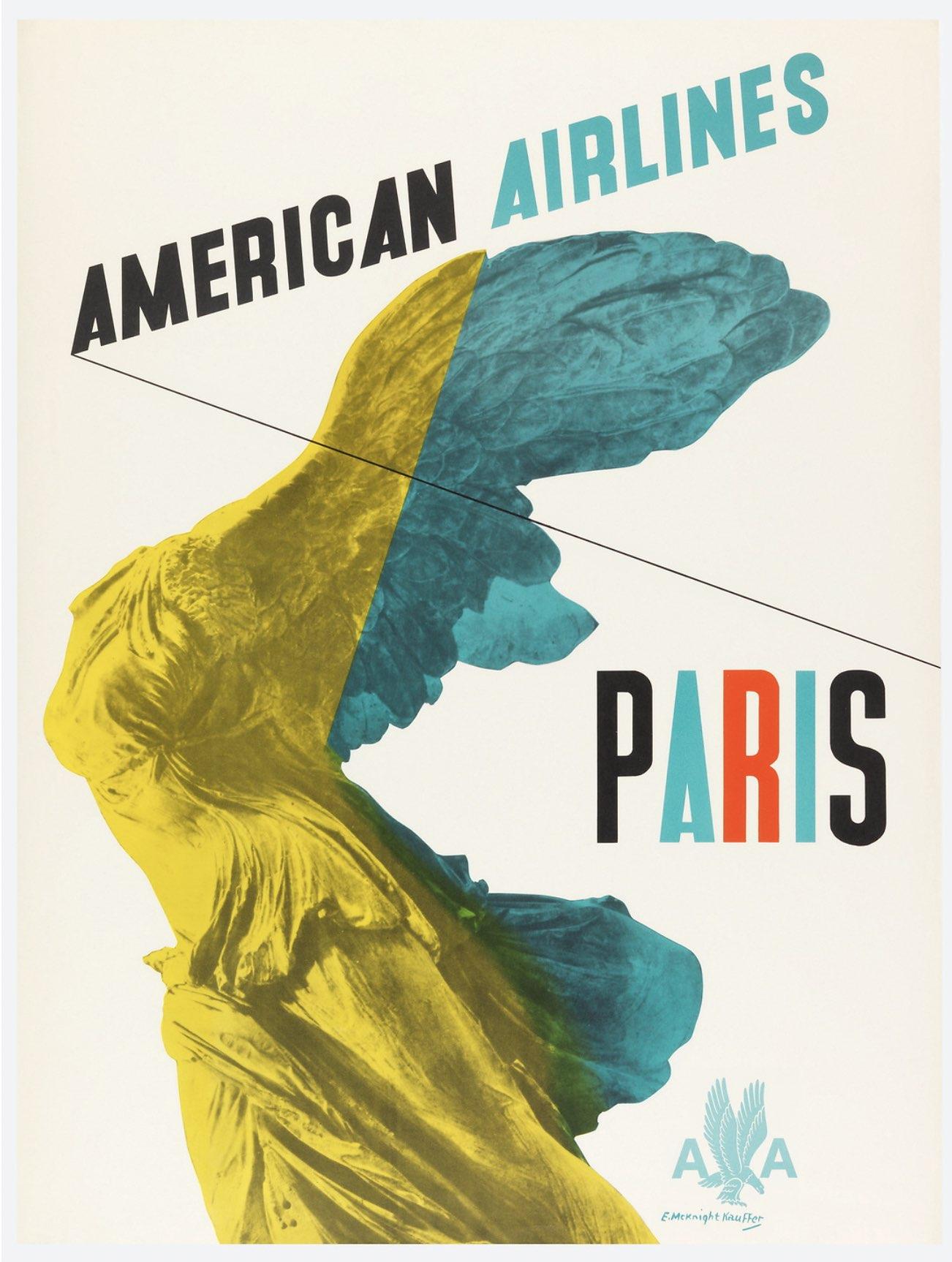Kauffer widened the scope and impact of his practice through collaborations with his peers in art, literature, performance, and film. A champion of new media, Kauffer’s work included commissions as varied as film titles for Alfred Hitchcock’s The Lodger, illustrations for T. S. Eliot’s Ariel poems, costumes for theatrical and ballet productions, and covers for novels by H.G. Wells, Aldous Huxley, and Ralph Ellison. He shared a dark room with Man Ray and worked with groundbreaking textile designer Marion V. Dorn, who would later become his wife. Dorn’s designs will be highlighted at key moments in the exhibition.
Though Kauffer considered himself a progressive and an egalitarian, his commissioned work tells a more complicated story about his ideals, his privilege and his perspective on race. Underground Modernist will examine how Kauffer’s designs expressed and challenged the energy, ideas, and unrest of his time. Over the course of four decades, he responded to the quickening pace of contemporary life by capturing the attention of a fast-moving public. His dedication to design as a social responsibility guided his distinguished career and defines his legacy.
Kauffer believed that modern art should move beyond the walls of museums and galleries to infiltrate daily life. He argued that innovative expression should be matched by social and cultural engagement, and that designers should be accountable to their public as well as to their clients. “The artist in advertising is a new kind of being,” Kauffer wrote in 1938. “His responsibilities are to my mind very considerable. It is his business constantly to correct values, to establish new ones, to stimulate advertising and help to make it something worthy of the civilization that needs it.”
Cooper Hewitt is America’s design museum. Inclusive, innovative, and experimental, the museum’s dynamic exhibitions, education programs, master’s program, publications and online resources inspire, educate and empower people through design. An integral part of the Smithsonian Institution—the world’s largest museum, education and research complex—Cooper Hewitt is located on New York City’s Museum Mile in the historic, landmark Carnegie Mansion. Steward of one of the world’s most diverse and comprehensive design collections—over 215,000 objects that range from an ancient Egyptian faience cup dating to about 1100 BC to contemporary 3D-printed objects and digital code—Cooper Hewitt welcomes everyone to discover the importance of design and its power to change the world.
























![DEl Kathryn Barton [Australian b. 1972] the more than human love , 2025 Acrylic on French linen 78 3/4 x 137 3/4 inches 200 x 350 cm Framed dimensions: 79 7/8 x 139 inches 203 x 353 cm](/sites/default/files/styles/image_5_column/public/ab15211bartonthe-more-human-lovelg.jpg?itok=wW_Qrve3)



